

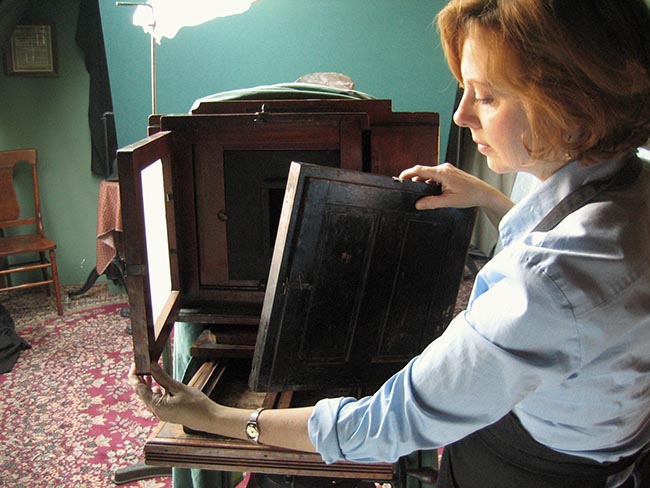
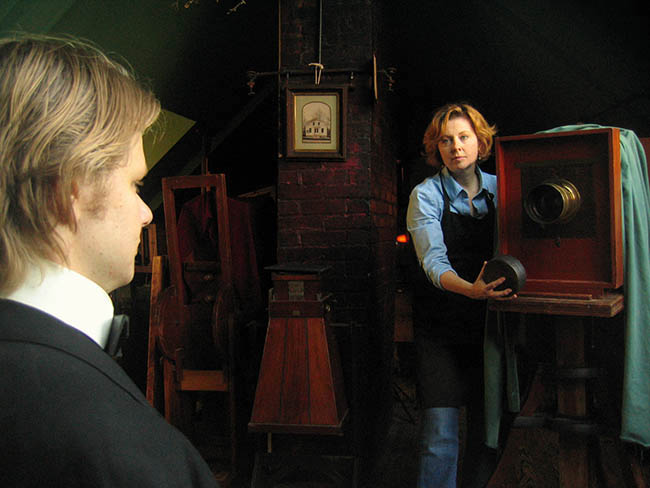
After the exposure is made, the plate holder is secured, removed from the camera, and brought back to the darkroom. The plate is removed from the holder and the developer, a dilute solution of ferrous sulfate (iron), acetic acid, and alcohol are gently poured onto the collodion side of the plate and rocked. The image gradually becomes visible within a few seconds as the areas exposed by light entering the camera are converted to metallic silver. When development is complete in a minute or two, the developer is removed by thoroughly washing with clean water. The plate can now be safely taken out from the darkroom.
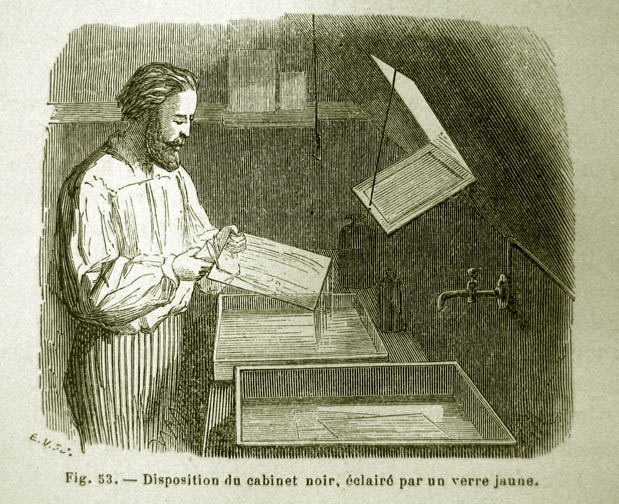
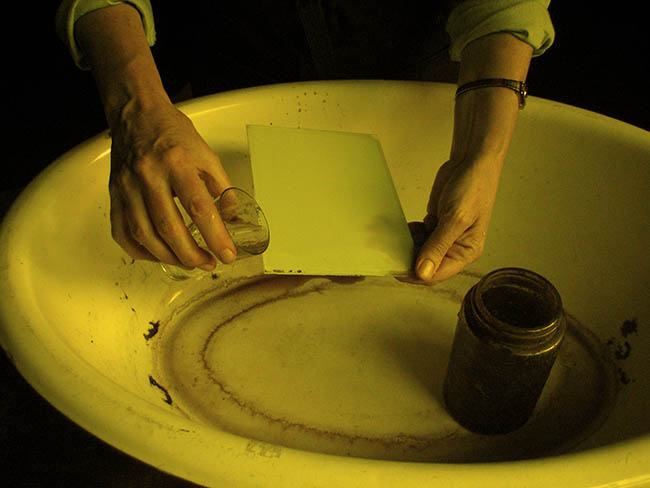
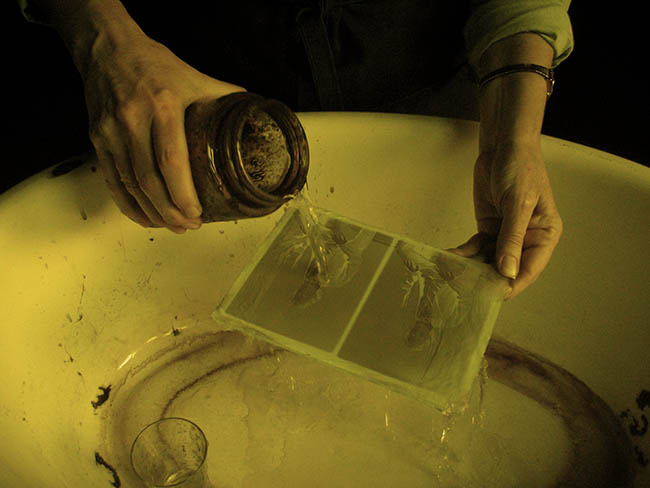
The developed plate is placed into a tray of sodium thiosulfate (also known as sodium hyposulphite) or potassium cyanide, to remove the unused silver halides. It is then washed well with fresh water.
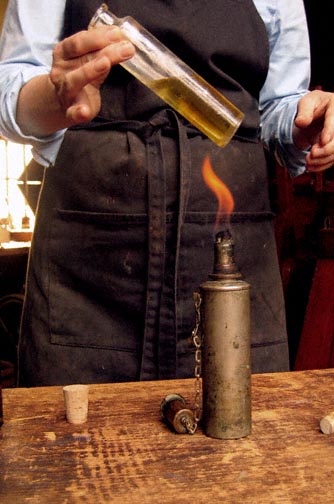
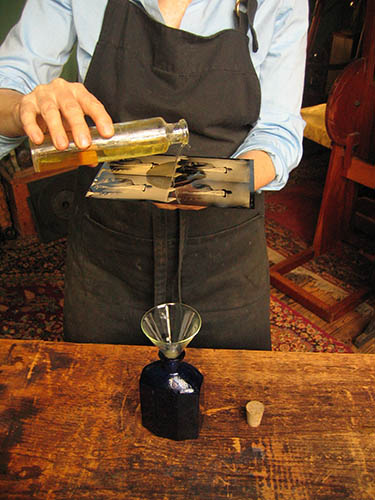
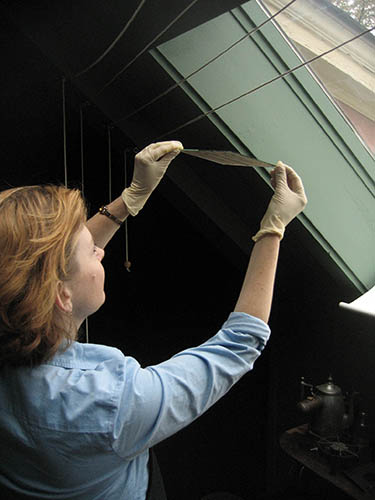
The plate is dried over a flame from an alcohol lamp. While still warm, it is flowed with a protective varnish made from gum sandarac, alcohol, and oil of lavender. The sandarac varnish is extremely sticky until thoroughly dried.
Ambrotypes or tintypes are made nearly the same way as collodion negatives. Positives require much less exposure time, and processing formulas vary slightly. Potassium cyanide was usually the preferred fixing solution for collodion positives because it leaves the silver particles a brighter color.
Whether making wet-plate positives or negatives, the collodion must remain wet from the time the plate is coated with collodion to the development, or the plate loses sensitivity. This is why the technique is called the wet-plate collodion method.
Aside from the wet plate process, collodion plates may be used as preserved damp or completely dry in several variants of the process. Both require much longer exposures and development. In addition to this, collodion images can be stripped from the glass support and transferred to paper or other flexible materials. There are also collodion emulsions, where the halides and silver are mixed before coating, for plates and printing papers. The collodion chloride print is the most stable of all silver-based photographic printing papers.
The first use of collodion spanned well over thirty years, from 1851 to the 1880s. The vast majority of collodion photographers were making commercial portraits, particularly prints from negatives. The most popular were the "Carte de Visite" French for "calling cards." The prints were approximately the same size as business cards today.
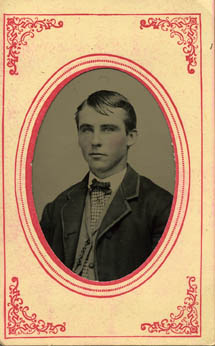
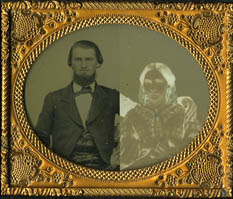
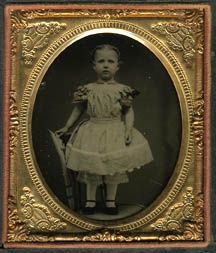
NEXT: Ambrotypes
PREV: The Lure of Collodion